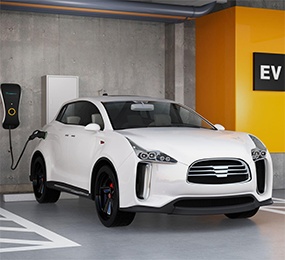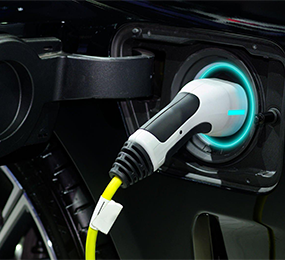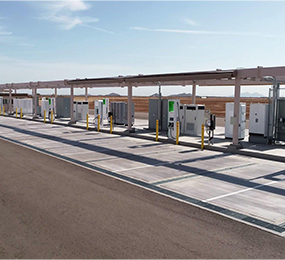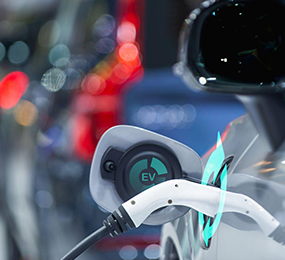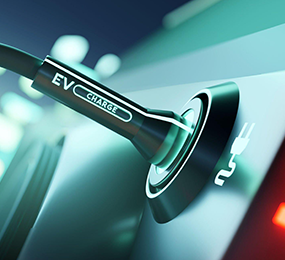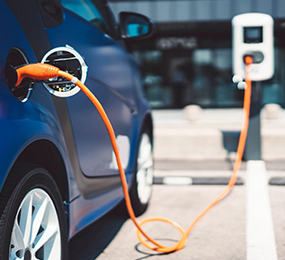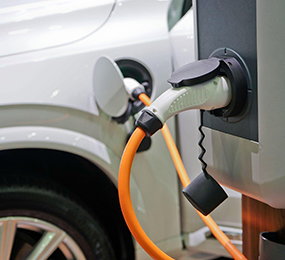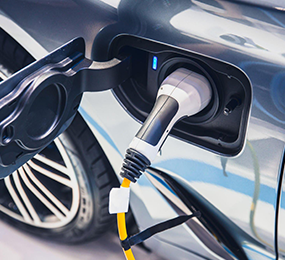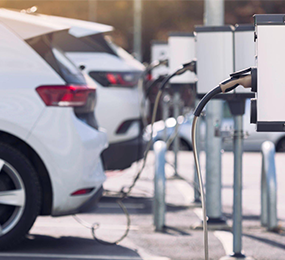Public EV Charging Infrastructure
Access to public charging will need to extend as EV markets grow. Today, the majority of EV charging gets done in people's homes and offices. Consumers will increasingly demand EVs to provide the same services, simplicity, and autonomy as conventional automobiles.
In 2021, the number of publicly accessible chargers globally surpassed 1.8 million, with fast chargers accounting for one-third of the total. In 2021, about 500 000 chargers will have been built, which is more than the entire number of public chargers accessible in 2017. The number of publicly accessible chargers increased by 37% in 2021, compared to 45% in 2020 and pre-pandemic roll out rates. Between 2015 and 2019, the average yearly growth rate was about 50%. Fast charging rose significantly more than in 2020 (48% vs. 43%), but slow charging increased considerably slower (33% vs. 46%).
The availability of public rapid charging stations is increasing.
Longer travels are made easier by public fast chargers. As they become more prevalent, they will permit longer trips, entice consumers who do not have access to private charging to acquire an EV, and address range anxiety as a barrier to EV adoption.
Putting public chargers in places where people need them
Another critical element to consider is the placement of public chargers in areas where EV users will charge their vehicles. This notion may appear apparent, yet it can be difficult to implement in practice. States and businesses can evaluate motorists' driving and parking behavior at the local level to distribute public fees in the proper quantities and locations.
Matching charging speed to customer requirements
Given the substantially reduced cost of energy, drivers of private passenger vehicles with access to home or overnight charging will largely charge at home, and seven out of ten drivers are likely to install a home-charging system. These drivers will only use fast chargers when they are on long-distance excursions and cannot take the extra time to recharge at a slower public alternating-current charger, or when they forget to charge at home and cannot complete the round trip in the time available.
Drivers of private passenger vehicles who do not have access to home or overnight charging, on the other hand, will pick either rapid or slow public charging based on their daily journey plans. Electric commercial-fleet vehicle drivers will only charge publicly as necessary by the length and location of their excursions. Six out of every 10 charging sessions will take place at home or at work.
As a result, the use cases for fast charging are restricted, not to mention the high additional cost of fast chargers and the substantial load they place on the grid. States and companies should be cautious not to install rapid public chargers when slow charges would suffice. For example, in parking lots and other public places, DC charging may be provided as a premium service, but when a motorist is parked for an hour or more, slower AC charging is generally adequate. AC chargers can be extremely useful—and less expensive for towns to install—for public overnight charging for EV owners who are unable to install their own chargers where they reside.
Making public transportation more affordable
Utilities set power rates (which fluctuate depending on the time of day) and demand charges (which cover a utility's infrastructure maintenance expenditures) that essentially decide the prices consumers pay for electricity at EV-charging stations. EV drivers who use public charging stations have less control over when and where they charge than those who charge at home. (The time of day is important since the majority of public charging occurs during the day, when the cost per kilowatt-hour is often greater.) As a result, these drivers may end up spending five to 10 times more per kilowatt-hour than those who charge their EVs at home.
States may wish to emphasize efforts to provide equal public-charging charges when developing plans to establish an EV-charging infrastructure. They might do so by assisting with demand charges, financing the construction and operation of chargers in less profitable places, or by other methods.
Improving Public Charging Experience
Users' experiences with public charging are frequently unsatisfactory. The primary problems of public charging, are the speed, cost, availability (including both free and functional chargers), and safety of charging places. Drivers struggle to find chargers due to a lack of information; smartphone applications for identifying them tend to ignore rivals' chargers, reducing both availability and cost alternatives. Cost systems can vary greatly, from minute or kilowatt-hour pricing to varied fees for memberships or pay per usage. It's not always clear which choice provides the best value, and payment is sometimes a problem. Finally, charger design and function vary widely, and customer assistance is not always timely or helpful.
Connecting chargers to the electricity grid
While most power systems in the every country can supply enough electricity to fulfill EV charging demand, few can simultaneously send significant quantities of electricity to numerous EVs at high rates. Grid restrictions will arise locally, in neighborhoods and commercial areas (particularly near fleet depots), where EV charging will be concentrated. Grid upgrades will be costly: the cost of updating the grid and the location for a single public direct-current fast-charging (DCFC) station with four DC 150-kW chargers might exceed $150,000. Furthermore, in order to optimize emissions reductions from the transition to EVs, grid electricity must be as low carbon as feasible.
Creating feasible charging options for enterprises
Because government organizations are unlikely to build, own, or maintain all of the public-charging stations that drivers would require, making it economical to provide public-charging services will almost certainly be a precondition for building out a statewide infrastructure. States might assist charging firms in a variety of ways, including defraying the initial capital cost of installing chargers and arranging offtake agreements to purchase a specific quantity of charging service each month, regardless of how much EV consumers pay. They might also explore incentives for charging infrastructure deployment, as well as premiums for delivering green energy (these would improve the economics of charging businesses by providing ancillary revenue streams).


